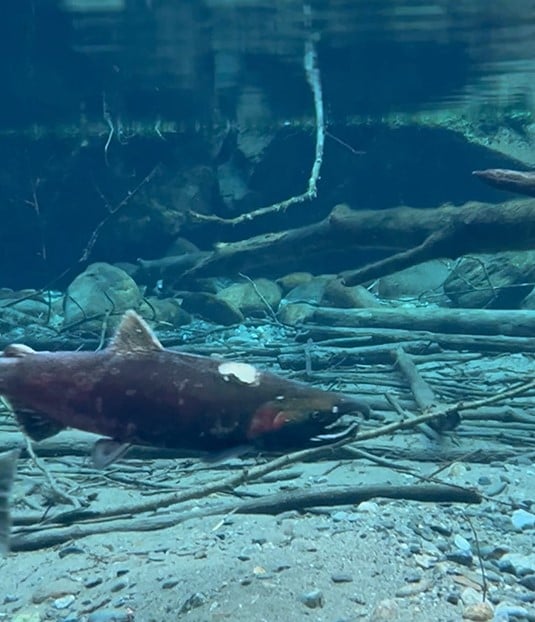In 2020, Zhenyu Tian, Ed Kolodziej, Jen McIntyre, and their team of researchers at the University of Washington and Washington State University discovered the chemical 6PPD-quinone (6PPD-q) in our waterways. This chemical is commonly found as a byproduct of tires and enters water sources through roadway runoff. This chemical is particularly lethal to coho salmon, causing what is deemed urban runoff mortality syndrome (URMS).

6PPD-q is a compound resulting from the degradation of a common tire antioxidant known as 6PPD. This antioxidant is used to prevent tire degradation, enhancing tire lifespan while increasing vehicle operation safety. As tires undergo wear and tear, 6PPD is released into the environment, ultimately transforming into 6PPD-q. This water-soluble byproduct finds its way into surface waters through stormwater runoff, resulting in significant impacts on the environment.
6PPD-q’s impact on water quality has raised concerns in recent years, particularly in the context of salmon populations. Salmon, as an indicator species, play a crucial role in reflecting the health of aquatic ecosystems. Recent studies have shown that environmental concentrations of 6PPD-q have adverse effects on not only coho salmon but also brook trout and rainbow trout. Ongoing research is assessing different life stages of various species in order to understand how widespread 6PPD-q URMS may be.

Exposure to 6PPD-q has been shown to result in defects in the blood brain barrier which occur over durations on the scale of minutes to hours. It is hypothesized that the erratic behavior exhibited by coho is caused by hemorrhaging in the brain due to acutely toxic concentrations of 6PPD-q. This almost always results in death. But the story does not end with 6PPD-q. Researchers across the globe are now testing other vehicle-derived chemicals to assess their toxicity. The coming years may well reveal a wide range of chemicals for which we will have to find alternatives.
Herrera is one of several groups at the forefront of 6PPD-q research. Currently, we are working on projects designed to assess sampling best practices, street sweeping efficacy, stormwater filter performance, and source identification. Our goal is to gather information which can be used to mitigate the impact of 6PPD-q and ultimately restore our waterways and healthy salmon populations. As we navigate 6PPD-q and its implications on water quality, Herrera’s Dylan Ahearn, John Lenth, and Tim Clark are proud to contribute to the 6PPD-q body of research. Stay tuned for more information on these projects.
For more information on 6PPD-q, check out these resources: 2022_SWTreatmentOfTireContaminants-BMPEffectiveness.pdf (wa.gov) and 6PPD - Washington State Department of Ecology
Contributor: Dylan Ahearn